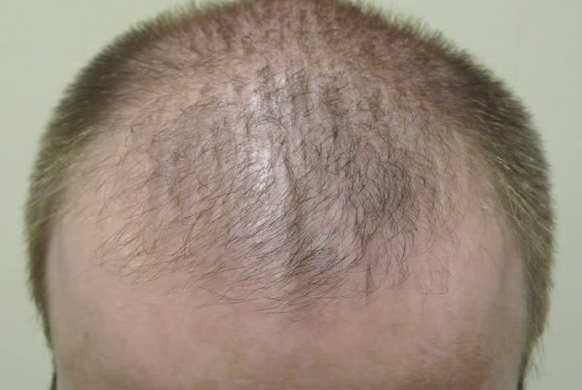
What Exactly Is DHT?
Naturally, everyone has testosterone in their bodies. This hormone is metabolized in the liver where it becomes subjected to an enzyme called 5-alpha-reductase. DHT is an end product of this process.
What determines DHT sensitivity and hair loss ? How Are Genes and DHT Related to Hair Loss?
A person can have very high levels of DHT and keep a full head of hair if they are not genetically predisposed to pattern baldness. The genes in our cells carry encoded information which results in the formation of specific protein structures. At the base of our hair follicles are DHT androgen receptors. The way these are structured is based on our genetic coding.
Individuals who carry the DNA for androgenic alopecia will have more sensitive protein receptors. Due to this characteristic, they will not be able to ward off the detrimental effects of DHT. And this will cause the hair follicles to miniaturize.
When DHT binds to androgen receptors on the hair follicles of those who are not genetically predisposed to pattern baldness, nothing really happens. But in individuals who carry the DNA for this condition, the follicle receptors will not provide adequate defense against the effects of DHT. And this compound will therefore inhibit the uptake of nutrients from the blood stream.
Shrinkage of the hair follicles then results from this process.
Making Wise Product Choices If You Are Losing Hair
Many companies will use DHT on their product labeling. They will also use this to present explanations of how their product works which will sound feasible to those who do not understand a larger context.
Anti-DHT shampoos, for example supposedly wash away excess amounts of the compound from the skin pores. However, the start of the miniaturization process occurs at the base of the hair follicles, not near the skin’s surface. Furthermore, those who are worried about developing hair loss issues should not even bother with any type of DHT reducing product if they are not genetically predisposed to androgenic alopecia. Again, having DHT is not something everyone should worry about.
Spironolactone creams which supposedly occupy DHT protein receptors is also another example of companies trying to leverage scientific terminology. While this mechanism of action sounds good in theory, topical over the counter creams may not have the ability to reach the base of the hair follicle.
Even Rogaine, which has FDA approval and is available over the counter, sometimes requires the use of a prescription drug, tretinoin to help increase the skin’s permeability and receptivity to Minoxidil.
Therefore, there are many questions and considerations to think about beyond the surface information that accompanies various products for treating the loss of hair.
